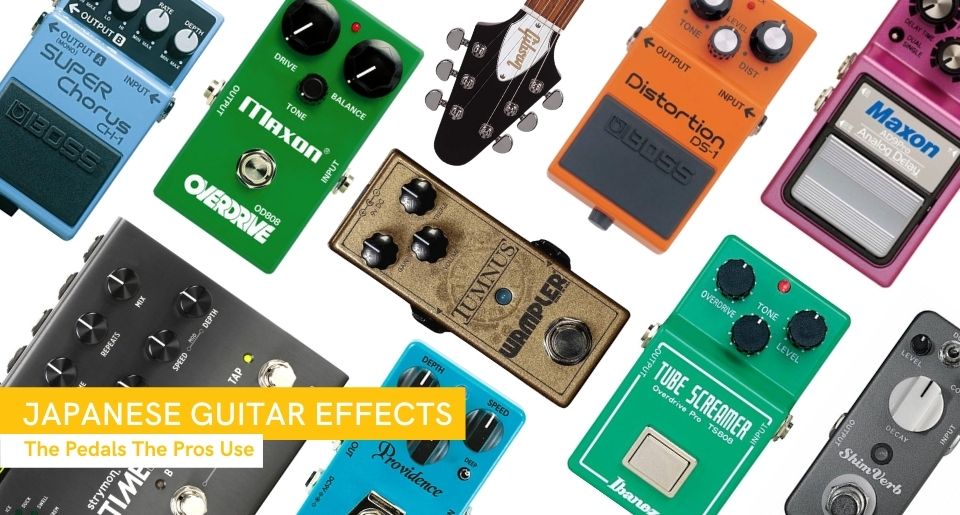,
Contents
- Introduction
The Dr. Frankensteins of Recording
Amping Up The Ante
High-End Audio: Where Audiophiles Wear Tuxedos
A Dance of Distortions
Digital Dystopia vs. Analog Utopia
Initial Summary - 10 Vacuum Tubes For Instrument, Recording and Audio Amps
Power Amp And Rectifier Vacuum Tubes - 6L6 Power Amp
- EL34 Power Amp
6L6 vs EL34 Comparison - 5U4 Rectifier
- 6V6 Power Amp
- KT88 Power Amp
- 6550 Power Amp
KT88 vs 6550 Comparison
Preamp Vacuum Tubes - 6SN7 Preamp
- 12AX7 Preamp
- 6DJ8 (ECC88) Preamp
- 6922 (E88CC) Preamp
- Conclusion
Introduction
In a world dominated by ones and zeros, the allure of vacuum tubes in the recording studio is like adding a pinch of spice to an otherwise digital soup – a bit unpredictable, a tad nostalgic, and oh-so-flavorful. Grab your sonic spatulas, as we embark on the journey through the hallowed halls of tubes, where warmth and quirks reign supreme.
The Dr. Frankensteins of Recording

In the sacred sanctum of recording, where perfection is pursued like a holy grail, vacuum tubes are the mad scientists of the sound lab. They're the Dr. Frankensteins stitching together harmonics, warmth, and a touch of distortion to bring your music to life. But beware, they're also a bit like musical toddlers – unpredictable, occasionally noisy, and prone to throwing a tantrum just when you least expect it. Ah, the joys of parenting your sonic creations!
Amping Up the Ante
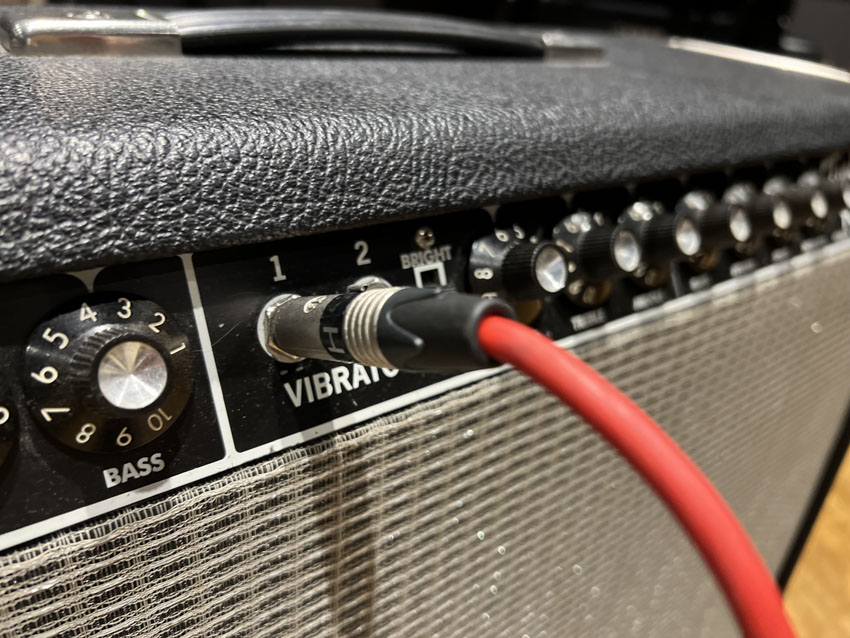
In the tumultuous arena of amp battles, tubes vs. solid-state is like watching gladiators clash. Tubes, the Russell Crowes of the sonic colosseum, bring a theatrical flair to your guitar solos. But remember, they can be a bit diva-ish – demanding attention, occasionally overheating, and acting out if they're not in the mood. Solid-state, on the other hand, is like the reliable office worker – efficient but lacking the rock 'n' roll rebellion. It's a tough call; do you want a reliable 9-to-5 amp or a rockstar prone to stage dives?
High-End Audio: Where Audiophiles Wear Tuxedos
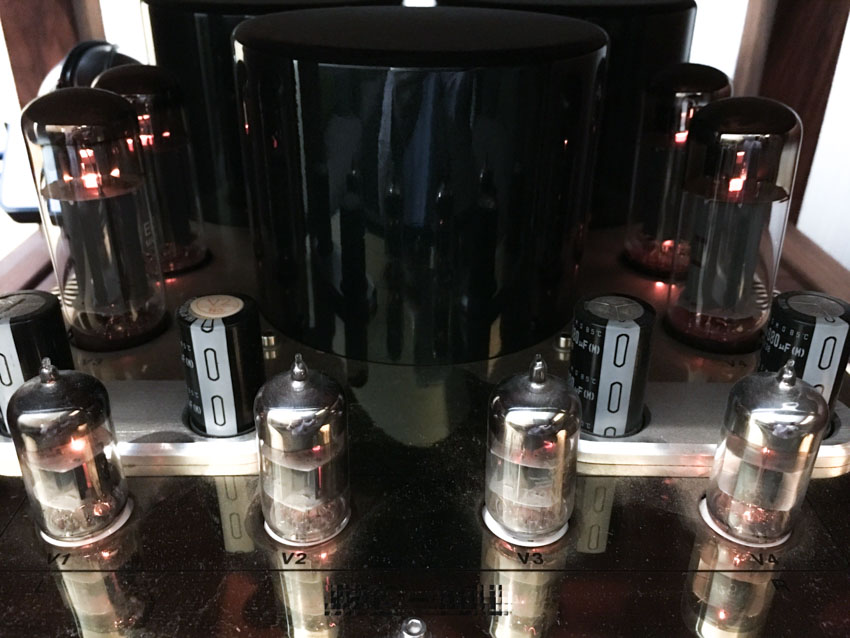
In the swanky world of high-end audio, vacuum tubes are the James Bonds of sound – sophisticated, charming, and a little bit mysterious. Audiophiles swear by them, claiming they turn listening into a religious experience. But let's be real, these tubes can be a tad high-maintenance. It's like dating someone who insists on candlelit dinners every night – delightful, but you better have a stockpile of candles. Plus, they can be a bit like vintage wine – aging gracefully but occasionally prone to a cork malfunction.
A Dance of Distortions
When comparing tubes to solid-state, it's like choosing between a classic muscle car and a hybrid. Tubes are the muscle car – a bit thirsty, occasionally finicky, but when they roar, everyone stops and stares. Solid-state is the hybrid – practical, efficient, and doesn't guzzle your wallet's gas money. Tubes add a touch of romance to your sound, like a love letter written in cursive, while solid-state is more of a text message – gets the job done, but lacks the flair.
Digital Dystopia vs. Analog Utopia
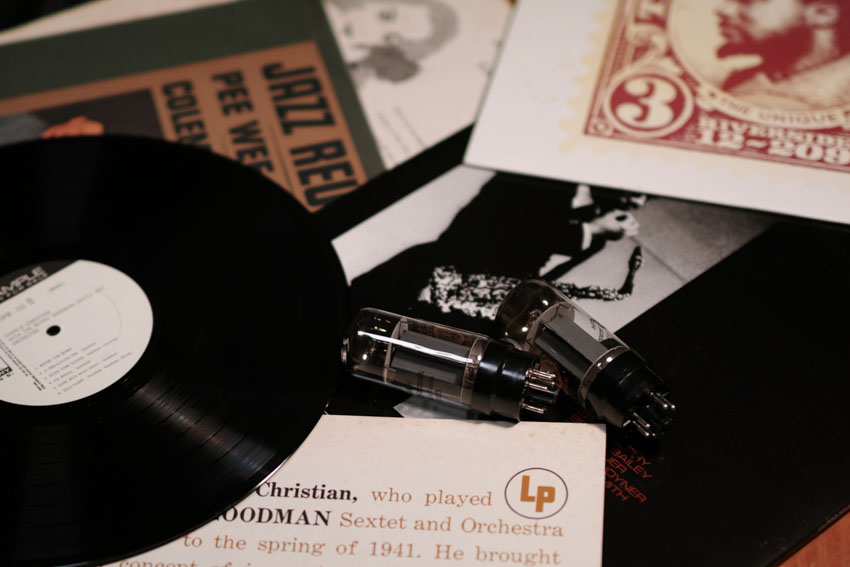
In an age of streaming and click-and-play playlists, tubes might seem like the vinyl records of audio gear. But isn't music more than just aural wallpaper? Tubes are the vinyl enthusiasts, urging us to put on the record, sit down, and actually listen. It's the difference between grabbing a burger at the drive-thru and savoring a five-course meal – both fill you up, but only one leaves you with a lingering taste of something special.
Initial summary
So, why venture into the whimsical world of tubes? Because, dear engineer, music isn't always meant to be a perfectly polished diamond. Sometimes it's about the rough edges, the quirks, and the unpredictable surprises. Tubes add that splash of unpredictability, turning your sonic experiment into a daring escapade. So, throw caution to the wind, crank up the tube heat, and let the quirks and warmth of analog become your sonic companions. After all, in a world of cold, sterile precision, a little analog mischief goes a long way. Now to the important stuff. The vacuum tubes!
10 Vacuum Tubes For Instrument, Recording and Audio Amps
Here, we'll walk you through ten of the most popular vacuum tubes and their unique characteristics, catering to different types of amplifiers - audio amps, guitar amps, bass amps, and preamps.
Power Amp and Rectifier Vacuum Tubes
6L6
Type: Power Amp

Amps/Bands/Artists/Genres: Stevie Ray Vaughan, Fender Twin Reverb, Blackface-era Fender amps
The 6L6 is a workhorse in the world of power amplifiers. It provides a clean, powerful, and well-defined sound, making it popular in both guitar and bass amplifiers. With its strong bass response and headroom, the 6L6 is often the go-to choice for those seeking clear and dynamic tones.
EL34
Type: Power Amp
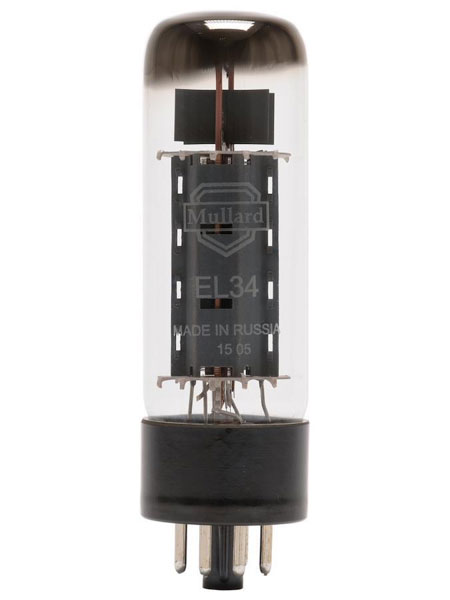
Amps/Bands/Artists/Genres: Marshall amps, Eddie Van Halen, Pete Townshend (The Who)
The EL34 is another power amp tube widely embraced in guitar amplification. It offers a warm and crunchy distortion that's ideal for classic rock and metal genres. Its harmonically rich overdrive has made it a staple in countless iconic amplifier designs.
6L6 vs EL34 Comparison
The comparison between the 6L6 and EL34 is a classic debate in the world of guitar amplifiers and tone shaping. These two power tubes have distinctive characteristics that greatly influence the sound and performance of amplifiers. Let's dive into their differences:
6L6
The 6L6 is known for its clean, powerful, and well-defined sound. It's often associated with classic American guitar tones, offering a tight bass response and ample headroom. This makes it a popular choice for guitarists who require clarity and punch. The 6L6 provides a clean canvas for pedals and effects, making it versatile for various music genres. It's frequently found in amplifiers like the Fender Twin Reverb and has been a key component in shaping the clean, bell-like tones of iconic guitarists like Stevie Ray Vaughan.
EL34
The EL34, on the other hand, is renowned for its warm and crunchy distortion. This tube produces harmonically rich overdrive and is often the choice for classic rock and hard rock genres. The EL34's midrange presence, smooth breakup, and pronounced upper harmonics create a signature British sound that can be heard in amplifiers like Marshall's JCM800. It's responsible for the iconic tones of guitar legends like Eddie Van Halen and Pete Townshend.
So, when deciding between the 6L6 and EL34, it primarily boils down to the style of music you play and the tonal characteristics you desire. If you lean towards clean tones and versatility, the 6L6 might be your preference. If you're after a warm, saturated crunch and classic rock vibes, the EL34 is likely your go-to choice.
It's also worth mentioning that some amplifiers offer the option to switch between these two tube types, providing flexibility to musicians who want to explore a broader tonal range without having to invest in multiple amplifiers. Ultimately, the choice between 6L6 and EL34 comes down to personal taste and the sonic palette you wish to paint with your amplifier. Both tubes have left an indelible mark on the world of guitar amplification, each contributing its unique sonic signature to the musical landscape.
5U4
Type: Rectifier
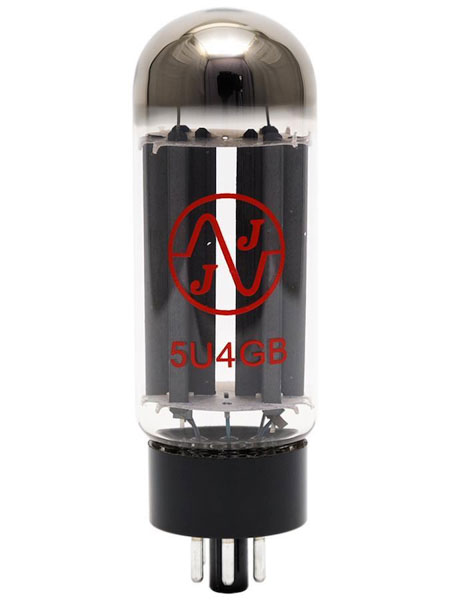
Amps/Bands/Artists/Genres: Vintage Fender amps, Duane Allman (The Allman Brothers Band)
For vintage audio amplifiers and guitar amps, the 5U4 rectifier tube is a go-to choice. It provides a sag in the voltage, creating a natural compression effect, resulting in smooth, singing sustain. This tube is beloved by tone purists.
The 5U4 is a classic rectifier tube with a rich history in the world of amplification. Its name may not carry the same rockstar status as some of the more famous preamp and power tubes, but it plays a crucial role in shaping the sound of many vintage audio and guitar amplifiers. The 5U4's unique characteristics are celebrated by those who appreciate its distinct sonic contribution.
What sets the 5U4 apart from other tubes is its role as a rectifier. But what exactly is a rectifier, and why is the 5U4 called one? Well, a rectifier is an essential component in the power supply circuit of an amplifier. It's responsible for converting alternating current (AC), which periodically changes direction, into direct current (DC), which flows steadily in one direction. This conversion process ensures a steady and consistent flow of electrical current to the amplifier's components.
In the context of the 5U4, its rectification action is closely tied to its electrical properties. The 5U4 tube employs a full-wave rectification method, which is characterized by its ability to convert both the positive and negative halves of the alternating current cycle into a unidirectional flow of current. This has an interesting effect on the amplifier's performance; it introduces a natural compression and "sag" in the voltage, which can lend a unique character to the sound.
The 5U4's rectification process results in smoother and more "singing" sustain, which can be particularly appealing to guitarists. It imparts a vintage, compressed feel to the amplifier's response, adding to the instrument's expressiveness. This is why many vintage amplifiers, such as the Fender '59 Bassman, were equipped with the 5U4 rectifier tube, and it has been instrumental in shaping the iconic tones of the rock 'n' roll era.
While the 5U4 may not have the same level of recognition as other tubes, its contribution to the vintage sound of classic amplifiers is undeniable. It's a testament to the intricate world of tube technology, where even the seemingly unsung heroes play a vital role in shaping the sonic landscape.
6V6
Type: Power Amp
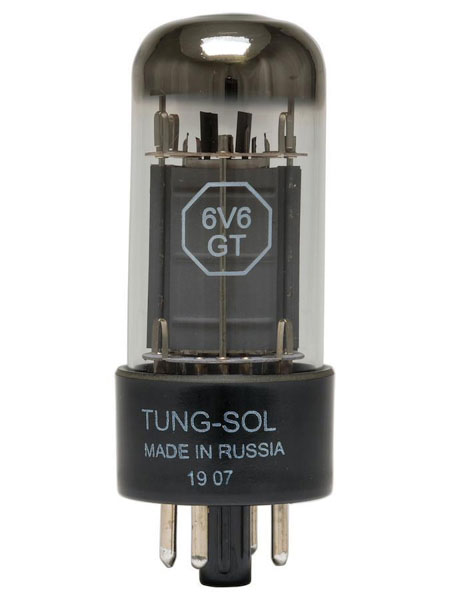
Amps/Bands/Artists/Genres: Fender Deluxe Reverb, Eric Clapton, BB King
The 6V6 is a popular power tube known for its sweet and harmonically rich tone. It's often associated with vintage and classic American amplifier designs. The 6V6 provides a warm and rounded sound with a pronounced midrange, making it ideal for guitarists looking to achieve that timeless, clean and overdriven tone reminiscent of the golden era of rock 'n' roll. While it might not offer the high wattage of some other power tubes, the 6V6's tonal qualities, especially when pushed into overdrive, have made it a beloved choice for blues and rock guitarists. It's a tube that embodies the vintage spirit of classic amplification.
KT88
Type: Power Amp

Amps/Bands/Artists/Genres: High-gain amplifiers, Yngwie Malmsteen, Dream Theater
The KT88 is a powerhouse among power amp tubes. It delivers high output and headroom, making it suitable for heavy rock and high-gain amplifiers. Its robust construction and ability to handle high voltage make it a go-to choice for power-hungry applications.
6550
Type: Power Amp

Amps/Bands/Artists/Genres: Bass amplifiers, Geddy Lee (Rush), John Paul Jones (Led Zeppelin)
The 6550 is a sibling of the KT88 but is known for its punch and clarity. Often found in bass amplifiers and high-powered guitar amps, the 6550 delivers a tight low end and an articulate midrange, making it an excellent choice for genres that require precision and power.
KT88 vs 6550 Comparison
KT88
The KT88 is a high-powered and robust tube known for its exceptional headroom and capacity to handle significant voltage and wattage. It's often the tube of choice for amplifiers that require a massive amount of power, making it popular in the high-gain, heavy rock, and progressive genres. The KT88 produces a tight low end, well-defined midrange, and sparkling high end. It excels at delivering high output with minimal distortion, maintaining clarity even when pushed to the limit. The rugged construction of the KT88 makes it a reliable choice for amplifiers that demand the utmost power and precision, and it's often found in amplifiers like the Hiwatt Custom 100 and Sunn Model T.
6550
The 6550, much like the KT88, is a robust power tube known for its punch and clarity. It delivers a clean and articulate sound with a focus on precision and detail. The 6550 is often chosen for bass amplifiers and high-powered guitar amplifiers where a tight low end and an articulate midrange are critical. This tube can handle high wattage while maintaining its clarity and headroom, making it an excellent choice for genres that require power and precision. The 6550 has been a staple in amplifiers like the Ampeg SVT and Peavey 6505+, and it has played a significant role in shaping the signature tones of musicians such as Geddy Lee (Rush) and John Paul Jones (Led Zeppelin).
In comparing the KT88 and the 6550, it's evident that both tubes are designed for high-powered applications, offering exceptional clarity and headroom. However, the choice between them often comes down to subtle tonal preferences and the specific demands of the amplifier and musical style. Musicians and amplifier designers carefully consider these factors when choosing between the KT88 and the 6550 to achieve the desired sonic characteristics and performance.
Preamp Vacuuum Tubes
6SN7
Type: Preamp
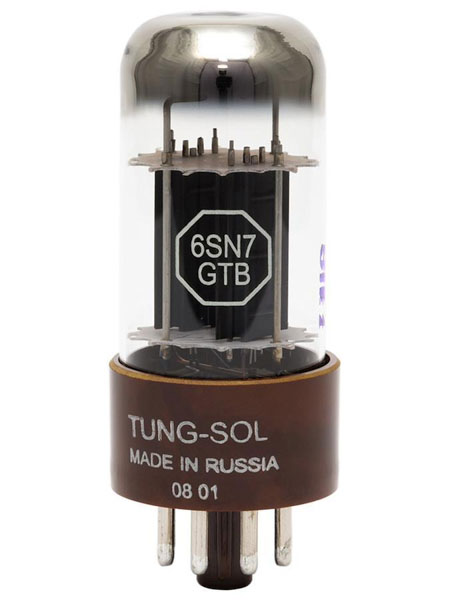
Amps/Bands/Artists/Genres: High-end audio equipment, Audiophile systems, Classical music
The 6SN7 is a dual-triode preamp tube revered for its balanced and clean sound. While it may not share the same rock 'n' roll notoriety as the 12AX7, it has found a devoted following in the world of high-end audio equipment and audiophile systems. This tube is all about preserving the integrity of the source signal, making it the choice for applications where transparency and low noise are paramount.
Audio enthusiasts and purists value the 6SN7 for its detailed sound and ability to faithfully reproduce the nuances of music. It excels at maintaining tonal purity, allowing listeners to hear the music as it was intended to be heard by the artists and producers. The 6SN7's low noise characteristics and linear performance have earned it a place in high-fidelity systems where accuracy and realism are cherished.
In audiophile-grade equipment, the 6SN7 has become synonymous with a precise, uncolored sound that reveals the subtleties of the source material. Its ability to convey the full spectrum of frequencies with exceptional clarity and a lack of distortion has made it a go-to choice for discerning listeners and critical listeners, ensuring that the music remains the focus of the listening experience.
12AX7 (ECC83)
Type: Preamp
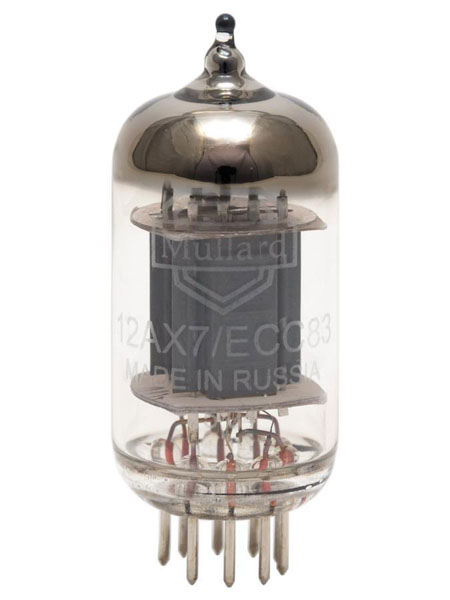
Amps/Bands/Artists/Genres: Led Zeppelin, AC/DC, Jimi Hendrix
The 12AX7, also known as ECC83 in Europe, is a venerable preamp tube celebrated for its high gain and versatility. It has left an indelible mark in the world of music, particularly in guitar amplification. The 12AX7's popularity can be attributed to its warm, smooth distortion characteristics that have shaped the sound of classic rock and blues. This tube is revered for its ability to add richness and harmonic complexity to the signal path.
Guitarists often turn to the 12AX7 to achieve overdriven tones that are both expressive and musical. Its high gain properties make it ideal for amplifying weak guitar signals, and it has the uncanny ability to bring out the soulful nuances of a player's touch. The 12AX7's widespread availability and its role in creating the iconic sounds of artists like Jimmy Page and Angus Young have solidified its place in the Hall of Fame of music technology.
Beyond the realm of guitar amplifiers, the 12AX7 also finds its home in various audio equipment, including microphone preamps and hi-fi systems. Its versatility, warmth, and rich harmonic content make it a staple in both professional studios and audiophile listening rooms, where it continues to shape the sonic landscape.
6DJ8 (ECC88)
Type: Preamp
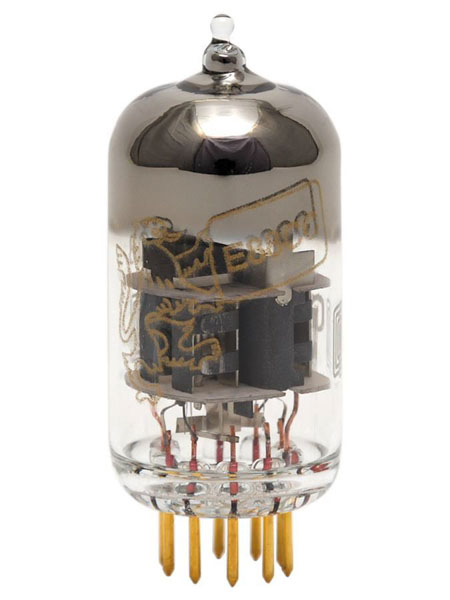
Amps/Bands/Artists/Genres: Audiophile-grade amplifiers, Jazz recordings, Classical music
The 6DJ8, also known as ECC88, is a dual-triode tube known for its balanced and clean sound. It's often associated with low noise and low distortion, making it a favorite choice for high-end audio equipment, preamplifiers, and headphone amplifiers. Its reliability and long lifespan make it popular in the hi-fi and audio tube world.
6922 (E88CC)
Type: Preamp
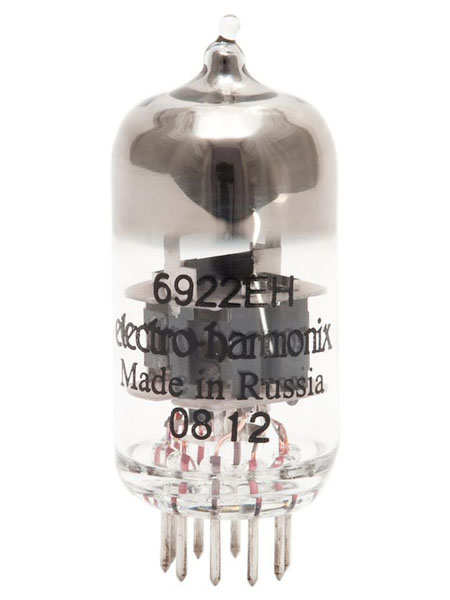
The 6922, or E88CC, is another dual-triode tube that shares many characteristics with the 6DJ8. It is often considered a premium version of the 6DJ8, offering low noise and low microphonics. What sets the 6922 apart is its reputation for a slightly warmer and more harmonically rich sound, which can be appealing in audio applications where a touch of warmth and character is desired. This characteristic has led to its adoption in high-end audiophile systems and some guitar amplifiers.
While these tubes are indeed similar in many respects, the choice between them can come down to the specific tonal preferences of the user or the demands of the application. Audiophiles who prioritize a clean and transparent sound often lean towards the 6DJ8, while those seeking a bit more warmth and character might opt for the 6922. Both tubes can be used effectively in a variety of high-fidelity and audio amplification contexts, making them valuable assets in the world of vacuum tubes.
Conclusion
The world of vacuum tubes for amplifiers is a treasure trove of unique sonic possibilities. Whether you're a guitarist seeking that perfect overdriven tone, an audiophile chasing audio purity, or a bassist aiming for tight and powerful lows, the right vacuum tube can be the key to achieving your sonic vision. The ten popular tubes we've explored here cater to a wide range of applications and have played a significant role in shaping the sound of music and recording throughout the years. As you explore the world of vacuum tubes, remember that each one has its unique character and can be the crucial element in achieving your desired sonic signature.





